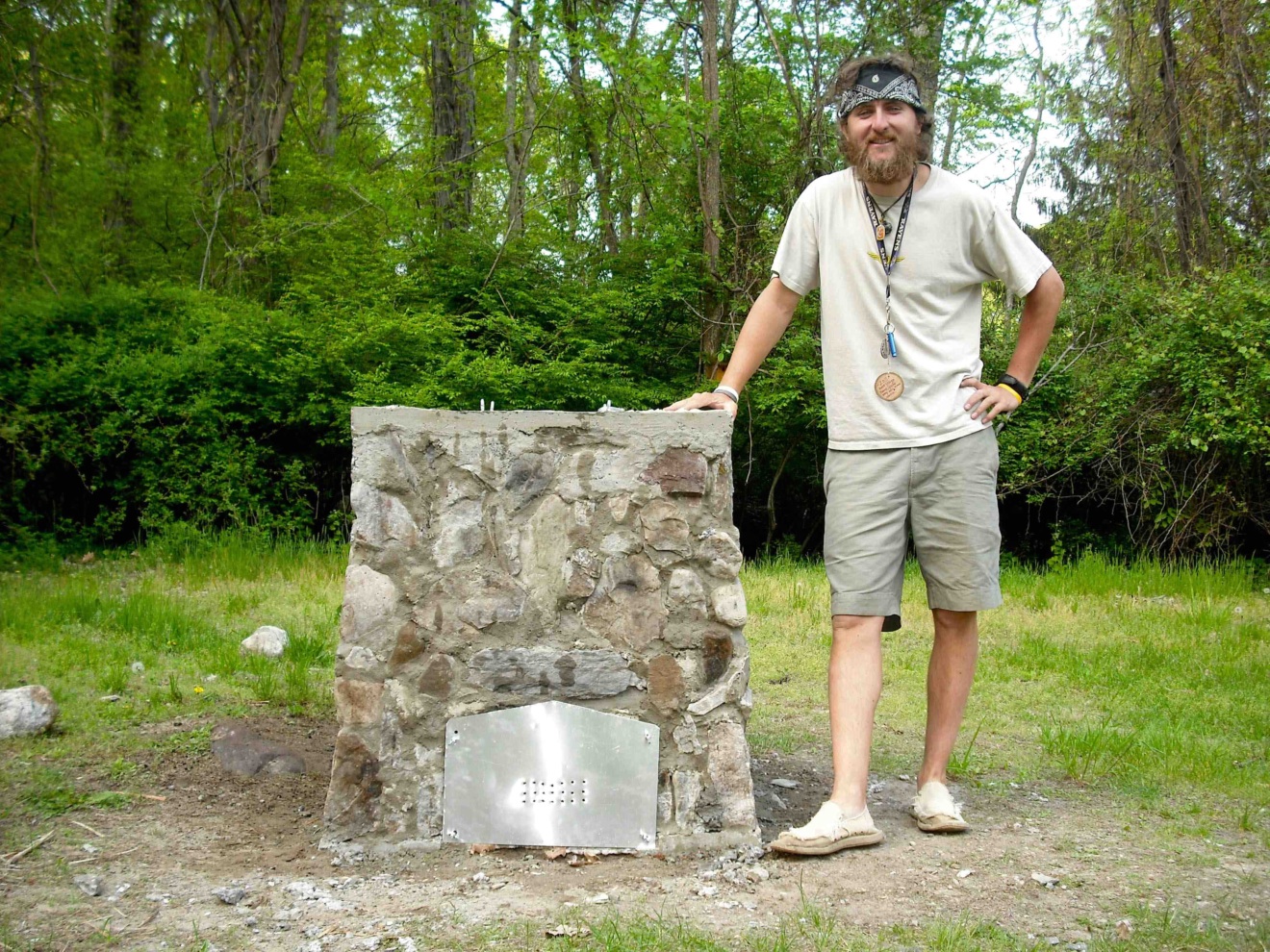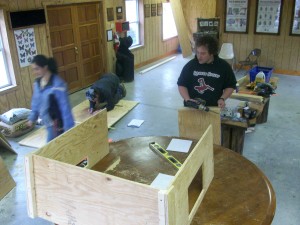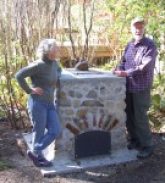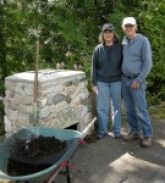Mission accomplished: our first Critter-Proof builder is now making compost

We’ve reached a milestone. The first composter to be built from the instruction manual is done, and it’s looking good.
Dan Egan is the first of our testers to complete a Critter-Proof Composter. Dan is the naturalist at Camp Mason, a YMCA camp in western New Jersey.
When we sent out a call for testers, he responded, writing,
We have school children spend overnight school trips weekly and on weekends on our 600 acres bordering the Delaware Water Gap National Recreation Area. Black bears are the largest problem with compost in NJ. We are trying to establish a composting program to reduce waste and are very interested in testing your manual to build a Critter-Proof Composter.
That was back in late March. A slow, wet spring intervened, along with the programs and other work at the Camp.
Dan sent photos along the way (you can see his rock pile and forms here), caught some inconsistencies in the text, and showed us a few places where the instructions needed more detail.
And now it’s done. Here’s Dan’s report:
So we are making compost!
On Tuesday we mortared the stone faces, built the aeration screen and attached the doors. Right away we began our compost program of collecting proper food waste from the camp’s guests to put in the composter.
Thank you for including YMCA Camp Mason in the testing of the Critter Proof Compost. It has been wonderful building something that works with the Earth, looks great and will be around for a long time. I thought the manual was great and you have my feedback from the bits and pieces that were confusing or contradicting to the photo instructions.
Speaking for myself, someone taking on this project with little carpentry OR concrete experience, I had a great time learning more, especially from minor mistakes here and there.
I plan on borrowing the forms we made for the camp composter and building one this summer in the Adirondack mountains of upstate New York on my family’s lake which will be even better.
One thing I noticed when I was building and cutting the doors was that I had bought aluminum too thin (the only sheeting at Home Depot) so sometime next week I will look to buy some new 1/8″ aluminum to replace the doors.
Other than that I think the compost will work great and I’m already looking forward to building a second one better than the first.
We couldn’t ask for a better result.
Dan’s thoughtful suggestions will be incorporated into the last draft of the manual, which we hope to have available by the end of the month, if not sooner.
To make sure you hear as soon as the instruction manual is ready, be sure to join our mailing list. Just fill in your first name and email address in the green box in the upper right hand corner. We respect your privacy and will never sell, share or trade our email list.







